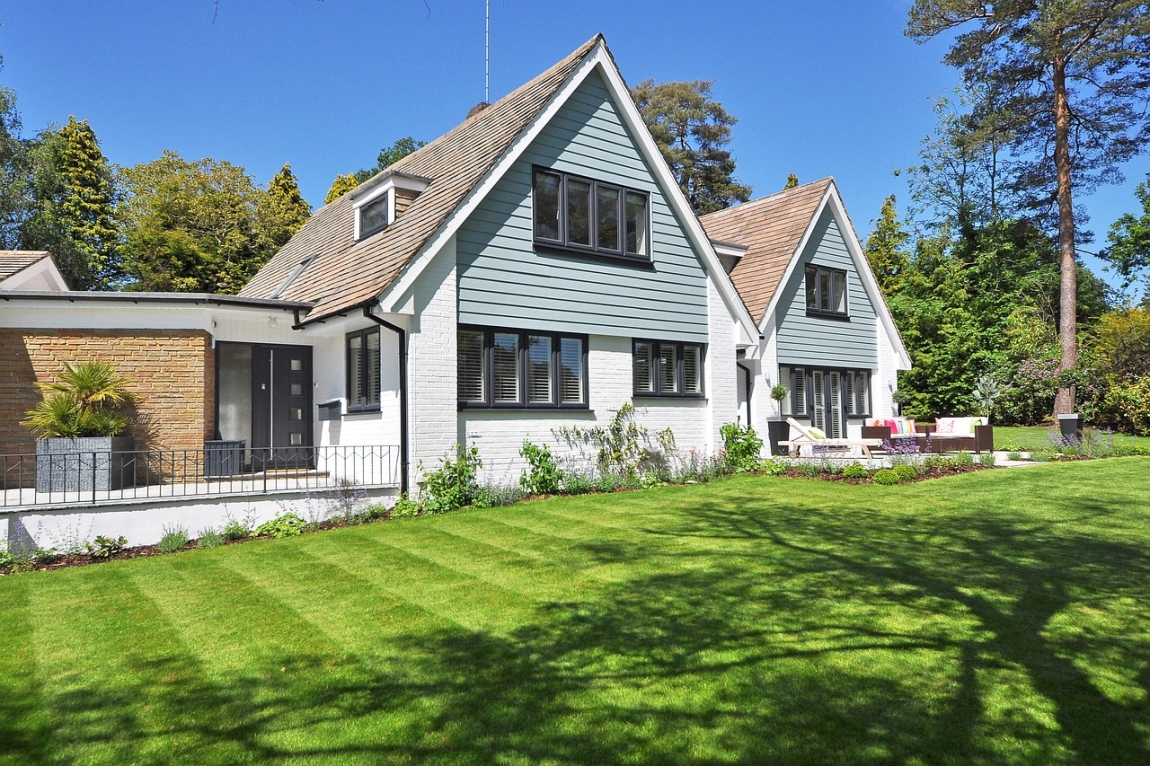Are you ready to unlock the secrets of real estate wealth in the Philippines? Discover the art of flipping houses and embark on a profitable journey in the thriving Philippine real estate market.
In this comprehensive guide, we will delve into the fundamentals of real estate flipping, share expert insights, and provide invaluable tips for success.

Whether you’re a seasoned investor or just starting out, this guide will equip you with the knowledge and strategies to thrive in the exciting world of house flipping in the Philippines. Get ready to turn properties into profitable investments and pave your way to financial freedom.
Understanding Real Estate Flipping
Flipping houses in the Philippines requires a solid understanding of the process and its intricacies. In this section, we will explore the basics of real estate flipping and delve into the key benefits and risks involved.
By grasping the fundamental concepts, you’ll be better equipped to navigate the exciting world of house flipping and make informed investment decisions.
The Definition and Concept of House Flipping
House flipping involves purchasing a property, renovating it, and selling it quickly for a profit. It’s a strategy that requires strategic planning, market knowledge, and effective execution.
By capitalizing on the potential value of distressed or undervalued properties, flippers aim to generate substantial returns on their investments.
Key Benefits of Real Estate Flipping
- Profit Potential: Successful house flipping can yield significant profits in a relatively short period. With careful research and a well-executed plan, you can turn a substantial profit from each property you flip.
- Control over Investment: Real estate flipping offers the advantage of having control over your investment. You have the power to choose the properties, make renovations, and decide when to sell, giving you a sense of autonomy in your investment decisions.
- Active Income Generation: Flipping houses allows you to actively generate income through property transactions. This hands-on approach can provide a more immediate cash flow compared to other forms of real estate investment.
Risks Involved in Real Estate Flipping
- Market Volatility: The real estate market is subject to fluctuations, and a sudden downturn can impact the profitability of a flip. Understanding market trends and conducting thorough research is crucial to mitigate this risk.
- Renovation Costs: Estimating renovation costs accurately is essential for ensuring profitability. Unexpected expenses and budget overruns can eat into your potential profits, so careful planning and contingency measures are vital.
- Time and Effort: Real estate flipping demands significant time and effort. From property acquisition to renovation and marketing, the process requires active involvement and diligent project management.
By comprehending the fundamentals of real estate flipping, you’ll be well-prepared to embark on your journey as a successful house flipper.
Researching the Philippine Real Estate Market

Before diving into the world of house flipping in the Philippines, conducting thorough research on the local real estate market is crucial. In this section, we will explore the key factors to consider when selecting target locations and delve into analyzing market trends and demand.
By arming yourself with valuable insights, you’ll be able to identify lucrative opportunities and make informed investment decisions.
Factors to Consider When Selecting Target Locations
Choosing the right location is paramount when it comes to successful house flipping. Consider the following factors to guide your decision-making process:
- Economic Growth and Development: Look for areas experiencing robust economic growth and development. Locations with expanding job markets, infrastructure development, and commercial activities tend to attract potential buyers and offer higher chances of profitability.
- Proximity to Amenities and Facilities: Properties located near essential amenities such as schools, hospitals, shopping centers, and transportation hubs tend to be more appealing to potential buyers. Assess the availability and quality of these amenities in your target location.
- Market Demand and Supply: Analyze the demand and supply dynamics of the real estate market in your selected area. Is there a high demand for properties? Are there indications of a growing market or an oversaturated one? Understanding the market dynamics will help you identify areas with strong potential for flipping.
Analyzing Market Trends and Demand
To make informed investment decisions, it’s essential to analyze market trends and demand patterns in the Philippine real estate market. Consider the following strategies:
- Historical Sales Data: Review past sales data to identify trends in property prices and market performance. Look for areas where property values have consistently appreciated, indicating a potentially lucrative market for flipping.
- Demographic Analysis: Understand the target demographic for your flipped properties. Analyze factors such as age groups, income levels, and lifestyle preferences to tailor your renovations and marketing strategies to meet their specific needs and desires.
- Rental Market Potential: Assess the rental market in your target location. Areas with a strong demand for rental properties can offer opportunities for additional income streams, such as renting out properties before selling them.
Staying Informed About Government Policies and Regulations
Be aware of the legal and regulatory landscape in the Philippines’ real estate sector. Keep yourself updated on policies related to property ownership, taxes, permits, and licensing requirements.
Compliance with these regulations is essential for a smooth and successful house flipping process.
By conducting thorough research and analysis of the Philippine real estate market, you’ll be equipped with valuable insights to identify potential hotspots and opportunities for profitable house flipping.
Financial Planning for Real Estate Flipping

Just as a skilled architect carefully designs a blueprint for a magnificent structure, successful real estate flipping requires meticulous financial planning. In this section, we will explore the importance of setting a budget for purchasing and renovating properties, as well as securing financing options.
By laying a solid financial foundation, you’ll pave the way for a profitable house flipping venture.
1. Setting a Budget: the Cornerstone of Success
Setting a budget is like constructing a sturdy foundation for your house flipping project. It provides a clear framework for managing your expenses and maximizing your profits.
Consider the following steps:
- Evaluate Your Resources: Assess your available financial resources, including personal savings, investment capital, and potential funding sources. This evaluation will help you determine the scope and scale of your flipping projects.
- Research Property Costs: Conduct a comprehensive analysis of property prices in your target locations. Compare recent sales data and consult with local real estate agents to gain insights into market value. This research will guide you in setting realistic budget expectations.
- Account for Renovation Expenses: Like an artist adding intricate details to a masterpiece, renovations play a vital role in increasing property value. Estimate renovation costs, including materials, labor, permits, and any unforeseen expenses. Proper budgeting ensures you have the necessary funds to transform properties into lucrative assets.
2. Securing Financing Options: Building Your Financial Pillars
Just as a well-constructed building relies on strong pillars for support, securing suitable financing options is crucial for your flipping endeavors. Explore the following avenues:
- Traditional Lenders: Approach banks or financial institutions to inquire about mortgage loans, personal loans, or lines of credit tailored for real estate investment. Present a well-prepared business plan and demonstrate your financial credibility to increase your chances of approval.
- Hard Money Lenders: These specialized lenders focus on real estate investments. While interest rates may be higher, they offer faster approval processes and flexibility for investors with limited credit history or unconventional projects.
- Joint Ventures: Partnering with experienced investors or individuals interested in real estate can provide additional capital and shared expertise. Forge mutually beneficial partnerships that align with your goals and ensure clear agreements to mitigate risks.
Remember, financial planning is the bedrock of successful house flipping. Like a skilled conductor orchestrating a symphony, strategic budgeting and securing financing options harmonize to create a profitable venture.
Finding Profitable Properties
In the quest for real estate flipping success, the art of discovering profitable properties is akin to unearthing hidden treasures. In this section, we will explore effective strategies for sourcing properties in the Philippines and provide insights into assessing their potential for profitable flipping.
Get ready to embark on a property hunt that leads you to lucrative opportunities.
Effective Strategies for Property Sourcing
To find properties with untapped potential, employ these strategies:
- Online Listings and Real Estate Platforms: Utilize popular online real estate listings and platforms tailored for the Philippine market. Explore websites and mobile applications that offer comprehensive property databases, filtering options, and features to connect with sellers.
- Local Networks and Word-of-Mouth: Tap into the power of networking by establishing connections with local real estate agents, property managers, contractors, and other industry professionals. Let them know about your interest in flipping properties, as they may have valuable leads and off-market opportunities.
- Auctions and Foreclosures: Attend property auctions and keep an eye on foreclosure listings. These avenues often present opportunities to acquire properties at discounted prices, allowing for potential higher returns on investment.
Assessing Property Potential and Estimating ROI
Once you’ve identified potential properties, it’s essential to assess their viability for flipping. Consider the following factors:
- Location and Neighborhood: Evaluate the desirability and growth potential of the property’s location. Analyze factors such as proximity to amenities, transportation links, schools, and commercial areas. A promising location increases the likelihood of attracting potential buyers.
- Property Condition and Renovation Scope: Conduct a thorough inspection of the property to assess its current condition and renovation requirements. Identify any structural or cosmetic issues that may affect the overall investment and factor in the potential costs of necessary repairs and upgrades.
- Market Demand and Potential Profit: Research the demand for similar properties in the area and analyze recent sales data to estimate potential selling prices. Consider the current market conditions, trends, and the projected return on investment (ROI) for your planned renovations.
Narrowing Down the Best Opportunities
To identify the most lucrative opportunities, employ these techniques:
- Comparative Market Analysis (CMA): Conduct a CMA by analyzing recent sales data of comparable properties in the area. This analysis helps determine the potential resale value and whether the property aligns with your financial goals.
- Risk Assessment: Evaluate the risks associated with the property, such as legal issues, liens, or environmental concerns. Assess the feasibility of overcoming these challenges and factor in the associated costs and potential delays.
- Due Diligence: Perform a comprehensive due diligence process, including property title verification, surveying, and confirming compliance with local regulations. This step ensures you have a clear understanding of the property’s legal and structural aspects before making a purchase decision.
By employing effective property sourcing strategies and diligently evaluating each opportunity’s potential, you’ll increase your chances of finding hidden gems that can be transformed into profitable investments.
Renovating and Improving the Property

Once you have acquired a potential flipping property, it’s time to unleash your creative prowess and transform it into a captivating masterpiece. Let’s explore essential tips for cost-effective renovations and upgrades, as well as strategies to maximize the property’s appeal to potential buyers.
Get ready to breathe new life into your investment and create a compelling space that commands attention.
Tips for Cost-Effective Renovations
To optimize your renovation budget and ensure a profitable outcome, consider the following tips:
- Prioritize Essential Repairs: Begin by addressing any structural or mechanical issues that could impact the property’s functionality and safety. Fixing foundational problems and addressing critical repairs is crucial before moving on to cosmetic enhancements.
- Create a Detailed Renovation Plan: Develop a comprehensive renovation plan that outlines the scope of work, timeline, and budget allocation for each aspect of the project. This plan will help you stay organized, make informed decisions, and manage costs effectively.
- hop Wisely for Materials: Compare prices and quality of materials from different suppliers to get the best value for your money. Consider seeking discounts, exploring alternative options, and utilizing cost-saving techniques without compromising on quality.
Maximizing the Property’s Appeal to Potential Buyers
To ensure your flipped property stands out in the competitive market and attracts potential buyers, focus on the following strategies:
- Create a Cohesive Design: Develop a cohesive design concept that appeals to your target market. Consider current design trends, local preferences, and the property’s location to create a visually appealing space that resonates with potential buyers.
- Enhance Curb Appeal: Make a lasting first impression by improving the property’s curb appeal. Upgrade landscaping, repaint the exterior, and consider small enhancements such as a new front door or updated lighting fixtures to create an inviting exterior.
- Stage the Property: Present the property in its best light by staging it effectively. Use appropriate furniture, décor, and lighting to highlight the space’s potential, create a welcoming ambiance, and help potential buyers visualize themselves living in the property.
Cost-Efficient Upgrades with Impact
Consider these cost-efficient upgrades that can elevate the property’s value without breaking the bank:
- Kitchen and Bathroom Enhancements: Focus on kitchen and bathroom upgrades as they often yield high returns. Consider refacing cabinets, updating fixtures, replacing countertops, or adding new tile backsplashes to create a fresh and modern look.
- Lighting and Fixtures: Upgrade outdated lighting fixtures with energy-efficient options that add ambiance and enhance the overall aesthetic. Consider installing dimmer switches or adding accent lighting to highlight architectural features.
- Energy-Efficient Improvements: Appeal to environmentally conscious buyers by incorporating energy-efficient upgrades. Install energy-saving appliances, LED lighting, smart thermostats, and adequate insulation to reduce utility costs and enhance the property’s market value.
By implementing cost-effective renovation strategies, maximizing the property’s appeal, and focusing on impactful upgrades, you’ll transform your investment into an enticing and profitable asset.
Marketing and Selling Flipped Properties

Congratulations on transforming your flipped property into a stunning masterpiece! Now it’s time to showcase your creation to potential buyers and ensure a successful sale.
Just in case you are interest in real estate investment trusts, you read more about this wonderful investing avenue by following the link.
Creating an Effective Marketing Plan
Crafting a comprehensive marketing plan is crucial to reach your target audience and generate interest in your flipped property. Consider the following strategies:
- Professional Photography and Virtual Tours: Invest in high-quality professional photography and virtual tours to showcase the property’s best features. Captivating visuals will grab buyers’ attention and entice them to explore further.
- Compelling Property Descriptions: Write compelling and engaging property descriptions that highlight its unique selling points. Emphasize the renovated features, desirable amenities, and the property potential to meet buyers’ needs and aspirations.
- Online Listings and Social Media: Utilize popular online real estate listings and social media platforms to promote your flipped property. Create captivating listings with attention-grabbing headlines, appealing descriptions, and stunning visuals to generate interest and attract potential buyers.
Utilizing Online Platforms and Local Networks
Expand your reach and leverage the power of online platforms and local networks to maximize exposure and increase your chances of selling the property:
- Real Estate Websites and Portals: Advertise your flipped property on reputable real estate websites and portals specific to the Philippines. Utilize the platforms’ features and tools to enhance the property listing and attract potential buyers.
- Social Media Marketing: Utilize social media platforms to create a buzz around your property. Share captivating visuals, engaging content, and relevant information about the neighborhood and amenities. Engage with users, respond to inquiries, and leverage social media advertising to reach a wider audience.
- Engage Local Real Estate Professionals: Collaborate with local real estate agents and brokers who have extensive networks and connections. They can help promote your property to their clients and provide valuable insights on market trends and buyer preferences.
Showcasing the Property’s Unique Features
Highlight the unique features and selling points of your flipped property to differentiate it from others on the market:
- Open Houses and Private Showings: Host open houses and private showings to provide potential buyers with an opportunity to experience the property firsthand. Stage the property effectively, create an inviting ambiance, and be prepared to answer any questions or address concerns.
- Highlight Renovations and Upgrades: Showcase the before-and-after transformation of the property through visual materials, including before photos, renovation progress shots, and after photos. Highlight the quality of the renovations, modern features, and attention to detail.
- Emphasize Potential Return on Investment: Educate potential buyers about the potential return on investment by showcasing the value-added improvements and the current market conditions. Provide data and projections that demonstrate the property’s profitability as an investment.
By implementing a well-crafted marketing plan, leveraging online platforms and local networks, and effectively showcasing the property’s unique features, you’ll attract interested buyers and increase your chances of selling your flipped property at a desirable price.
Legal Considerations and Documentation
Navigating the legal landscape is an essential aspect of real estate flipping in the Philippines. Understanding the necessary legal considerations and ensuring proper documentation is crucial for a smooth and compliant process.
In this section, we will delve into the key legal aspects you need to be aware of to protect your interests and ensure a successful transaction.
Understanding Real Estate Laws and Regulations
Familiarize yourself with the real estate laws and regulations in the Philippines. Consult with legal professionals or experts in the field to ensure you are well-informed about the legal framework governing property transactions and flipping.
Property Title Verification
Before purchasing a property, conduct a thorough title verification process. Engage the services of a reputable lawyer or a title company to ensure the property’s title is clean and free from any encumbrances, liens, or disputes.
Permits and Licenses
Comply with the necessary permits and licenses required for property flipping in the Philippines. This may include building permits, occupancy certificates, and any other permits specific to the renovations or changes made to the property.
Tax Obligations
Understand the tax obligations associated with real estate flipping in the Philippines. Consult with tax professionals or accountants to ensure you are aware of the applicable taxes, such as capital gains tax and documentary stamp tax, and fulfill your tax obligations accordingly.
Contracts and Agreements
Prepare and review contracts and agreements meticulously to protect your interests and outline the terms of the transaction. Engage legal professionals to draft or review purchase agreements, contracts with contractors and suppliers, and any other relevant documents.
Disclosures and Property History
Provide accurate and complete disclosures regarding the property’s history, including any known defects or issues. Failure to disclose pertinent information can lead to legal repercussions and undermine your reputation as a trustworthy investor.
Notarization and Registration
Ensure that all relevant documents, contracts, and agreements are properly notarized and registered with the appropriate government authorities. This helps establish the legality and enforceability of the documents involved in the real estate transaction.
Seek Professional Legal Advice
Engage the services of a qualified real estate lawyer who specializes in property transactions in the Philippines. They will provide expert guidance, review documents, and offer valuable advice throughout the flipping process.
By understanding and adhering to the legal considerations, securing proper documentation, and seeking professional legal advice, you can safeguard your interests and ensure a smooth and legally compliant real estate flipping process in the Philippines.
Managing Risks and Challenges

Embarking on a real estate flipping journey as well as investing in condominiums comes with inherent risks and challenges. Being prepared and proactive in managing these obstacles is crucial for a successful and profitable venture.
In this section, we will explore strategies to mitigate risks and overcome challenges that may arise during the flipping process. By adopting a proactive approach, you can navigate the uncertainties and emerge as a resilient real estate investor.
Identifying Potential Risks
Understanding the potential risks involved in real estate flipping allows you to develop strategies to minimize their impact. Consider the following key risks:
- Market Volatility: The real estate market can experience fluctuations due to various economic factors. Stay updated on market trends, demand-supply dynamics, and economic indicators to anticipate potential downturns and adjust your strategy accordingly.
- Financial Risk: Flipping properties requires a significant financial investment. Be prepared for unforeseen expenses, budget overruns, or delays that could impact your profitability. Maintain a contingency fund to address unexpected costs that may arise during the flipping process.
- Renovation Challenges: Renovating properties can present unexpected challenges such as construction delays, contractor issues, or unforeseen structural problems. Conduct thorough inspections, select reliable contractors, and establish clear communication channels to mitigate potential renovation-related risks.
Strategies for Risk Mitigation
Implementing effective risk mitigation strategies helps safeguard your investment and minimize potential losses. Consider the following approaches:
- Thorough Due Diligence: Conduct comprehensive due diligence on the property, market conditions, and potential risks. This includes property inspections, market analysis, and thorough research to make informed decisions and minimize the likelihood of unpleasant surprises.
- Diversification: Consider diversifying your real estate portfolio by investing in multiple properties or exploring different market segments. This spreads the risk and reduces the impact of any potential losses from a single investment.
- Contingency Planning: Create contingency plans to address unexpected events or setbacks. Have backup financing options, maintain open communication with contractors, and prepare alternative renovation plans to ensure minimal disruption to your project timeline.
Overcoming Challenges
Flipping properties can present various challenges, but with the right approach, they can be overcome. Consider the following strategies:
- Effective Project Management: Adopt a systematic and organized approach to project management. Set realistic timelines, coordinate with contractors and suppliers, and monitor progress closely to ensure timely completion of renovations.
- Continuous Learning and Adaptation: Stay updated with industry trends, best practices, and new regulations. Embrace a mindset of continuous learning, adaptability, and flexibility to navigate changing market conditions and overcome challenges that may arise.
- Networking and Collaboration: Engage with fellow real estate investors, professionals, and industry experts through networking events or online communities. Collaborate, share experiences, and learn from others who have faced similar challenges. Their insights and support can be invaluable in overcoming obstacles.
By identifying potential risks, implementing risk mitigation strategies, and adopting a proactive mindset to overcome challenges, you can navigate the complexities of real estate flipping in the Philippines with confidence.
Quick Notes
Congratulations on completing this comprehensive guide to real estate flipping in the Philippines. You have gained valuable insights into the intricacies of this profitable investment strategy.
By understanding the fundamentals of flipping houses, conducting thorough market research, planning your finances wisely, sourcing profitable properties, and navigating the legal and marketing aspects, you are now well-equipped to embark on your own real estate flipping journey.
Remember, success in real estate flipping requires dedication, careful planning, and adaptability. Stay informed about market trends, continue learning, and adapt your strategies as needed.
Be prepared to face challenges along the way but remain focused on your goals.
Drawing inspiration from real estate flipping success stories in the Philippines, you have seen firsthand how determination, perseverance, and strategic decision-making can lead to lucrative returns. Take these stories as proof that your efforts can yield fruitful results.
Now, armed with knowledge and insights, it’s time to unleash your creativity, passion, and entrepreneurial spirit. Embrace the opportunities that lie ahead, trust your instincts, and make informed decisions.
With each property you flip, you have the potential to transform houses into profitable investments, shaping a brighter financial future.
Get ready to embark on your real estate flipping adventure in the Philippines, and may every property you flip bring you closer to the success and financial freedom you desire. Good luck on your journey!






